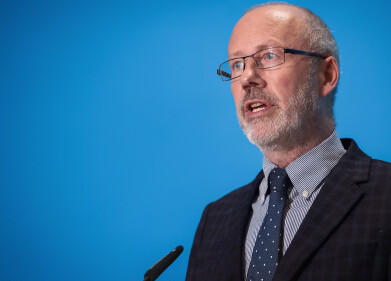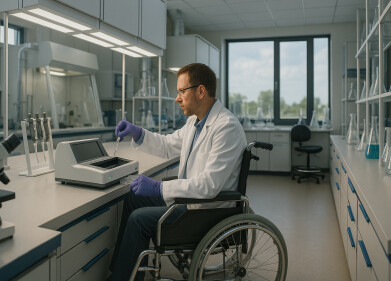-
.jpg) Professor Lee Cronin (Credit: University of Glasgow)
Professor Lee Cronin (Credit: University of Glasgow) -
.jpg) Credit: University of Glasgow
Credit: University of Glasgow
News
How can Fragmentation Tandem Mass Spectrometry help to Identify Molecular Biosignatures of Life Forms?
Jun 10 2021
An international research team has found a way of quantifying the structures of complex molecules, which could help identify the unique chemical signatures of life forms on other planets, or potentially of new life forms created in the laboratory.
“Our system is the first falsifiable hypothesis for life detection. It’s based on the idea that only living systems can produce complex molecules that could not form randomly in any abundance.” –Professor Lee Cronin.
Using ‘assembly theory’ scientists from the University of Glasgow led by Professor Lee Cronin, along with collaborators at NASA and Arizona State University, used Fragmentation Tandem Mass Spectrometry to deconstruct and count the unique components of molecules of samples from Earth and also extra-terrestrial locations. This decomposition provides a complexity measure, called the molecular assembly number, which is distinct from all other complexity measures because it is both computable and directly observable. The theory of molecular assembly can also be used to explain that the larger the number of steps needed to deconstruct a given complex molecule, the more improbable it is that the molecule was created without life.
Identifying chemical signatures
One of the main challenges of the search for extra-terrestrial life has been identifying which chemical signatures are unique to life, leading to several ultimately unproven claims of the discovery of alien life. The metabolic experiments of NASA’s Viking Martian lander, for example, only detected simple molecules whose existence could be explained by natural non-living processes in addition to living processes.
Professor Cronin, Regius Professor of Chemistry at the University of Glasgow, said: “Our system is the first falsifiable hypothesis for life detection. It’s based on the idea that only living systems can produce complex molecules that could not form randomly in any abundance. This allows us to sidestep the problem of defining life – instead we focus on the complexity of the chemistry.”
A life detection instrument based on this method could be deployed on missions to extra-terrestrial locations to detect biosignatures, or even detect the emergence of new forms of artificial life in the lab.
Professor Cronin added: “This is important because developing an approach that cannot produce false positives is vital to support the first discovery of life beyond Earth, an event that will only happen once in human history.”
'Identifying molecules as biosignatures with assembly theory and mass spectrometry', is published in Nature Communications. The research was supported by funding from the Engineering and Physical Sciences Research Council (EPSRC), The John Templeton Foundation, the European Research Council (ERC), and the Defense Advanced Research Projects Agency (DARPA).
Further information online
Digital Edition
Lab Asia Dec 2025
December 2025
Chromatography Articles- Cutting-edge sample preparation tools help laboratories to stay ahead of the curveMass Spectrometry & Spectroscopy Articles- Unlocking the complexity of metabolomics: Pushi...
View all digital editions
Events
Jan 21 2026 Tokyo, Japan
Jan 28 2026 Tokyo, Japan
Jan 29 2026 New Delhi, India
Feb 07 2026 Boston, MA, USA
Asia Pharma Expo/Asia Lab Expo
Feb 12 2026 Dhaka, Bangladesh


















